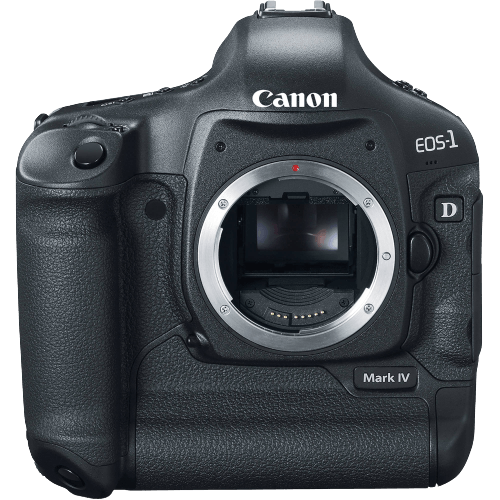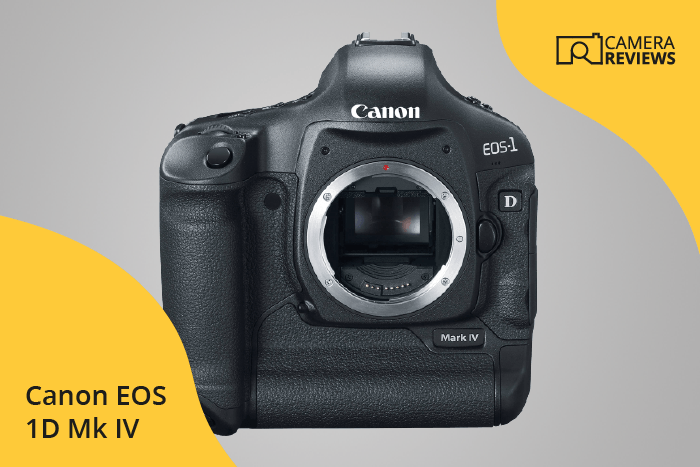Canon EOS 1D Mark IV Specs and Scores

The Canon EOS 1D Mark IV receives a score of 54/100, reflecting its general specifications. Launched in 2009, this DSLR camera came with a hefty price tag of $5840. Measuring 156 x 157 x 80mm and weighing 2.71lbs, it is a relatively sizable and heavy camera.
Considering the advancements in camera technology since its release, the Mark IV may not be the best option in today’s market. However, it still offers reliable performance for those seeking a classic DSLR experience.
Canon EOS 1D Mark IV Overview and Optics
The optics of the Canon EOS 1D Mark IV receives a score of 54/100. With 16.1 megapixels, this camera has a decent resolution but may not compete with the higher megapixel counts found in current models. The shooting speed of 10 frames per second is still respectable for capturing fast-paced action. The CMOS sensor, coupled with the Digic 4 processor, provides an adequate DXOMARK score of 74.
The APS-H sensor size is larger than the common APS-C but smaller than full-frame sensors, offering a unique balance between image quality and portability. The Canon EF lens mount allows for compatibility with a wide range of lenses, but the lack of image stabilization may require users to rely on stabilized lenses or tripods for steady shots. The 3:2 aspect ratio is standard for DSLR cameras and offers flexibility in cropping and printing.
While the Canon EOS 1D Mark IV’s optics may not stand out in today’s market, its features are still reliable for various photography needs. Its strengths lie in its shooting speed and compatibility with Canon EF lenses, making it a useful tool for photographers who prioritize these aspects.
Canon EOS 1D Mark IV Video Performance
The Canon EOS 1D Mark IV holds a video score of 43 out of 100. This camera offers Full HD video resolution with maximum dimensions of 1920 x 1080 pixels. The highest video frame rate available is 30fps. However, it lacks built-in time-lapse functionality.
Comparing the video capabilities to modern cameras, the 1D Mark IV falls short in several aspects. Many current models provide 4K resolution, higher frame rates, and time-lapse features. The EOS 1D Mark IV’s video performance seems outdated in today’s market.
The Canon EOS 1D Mark IV is not a top choice for videography enthusiasts, as its features are limited compared to contemporary cameras. Its video capabilities are not suitable for those seeking advanced video options.
Canon EOS 1D Mark IV Features and Benefits
The Canon EOS 1D Mark IV earns a feature score of 54 out of 100. This score reflects the camera’s specifications, which include a 3-inch screen with a resolution of 920,000 dots. However, the camera lacks modern features such as a touchscreen, flip screen, GPS, WIFI, and Bluetooth connectivity.
In today’s market, these specifications fall short compared to newer models. The absence of a touchscreen and flip screen limits the user’s ability to navigate through settings and frame shots conveniently. Additionally, the lack of GPS, WIFI, and Bluetooth hinders the sharing and geotagging of photos, a feature that many contemporary photographers find essential.
Despite these shortcomings, the Canon EOS 1D Mark IV remains a reliable camera for those who prioritize performance over advanced features. Its specifications may not be cutting-edge, but it can still deliver quality results for users who value simplicity and functionality.
Canon EOS 1D Mark IV Storage and Battery
The Canon EOS 1D Mark IV receives a storage and battery score of 48 out of 100. The camera has one memory card slot, which accepts SD / SDHC and Compact Flash (Type I or II) cards, as well as UDMA cards. While this provides versatility in storage options, having only one slot may be a limitation for some users.
The battery life of the EOS 1D Mark IV is 1500 shots, powered by an LP-E4 battery. This battery life is decent, but not exceptional in today’s market, and the camera lacks USB charging capabilities.
Taking these specifications into account, the storage and battery performance of the Canon EOS 1D Mark IV is adequate but not outstanding. Users seeking more advanced features in these areas may want to explore other options.
Canon EOS 1D Mark IV Alternatives
Do you want to know how the Canon EOS 1D Mark IV compares to its competitors? Have a look at the most popular comparisons for this camera below:
- Canon EOS 1D Mark II N vs EOS 1D Mark IV
- Canon EOS 1D Mark III vs EOS 1D Mark IV
- Canon EOS 1D Mark IV vs EOS 1Ds Mark III
- Canon EOS 1D Mark IV vs EOS 5D Mark IV
- Canon EOS 1D Mark IV vs EOS 1D X Mark III
- Canon 1D C vs EOS 1D Mark IV
Canon EOS 1D Mark IV FAQ
Does the Canon EOS 1D Mark IV Have Built-in Image Stabilization?
The Canon EOS 1D Mark IV does not have built-in image stabilization. However, it is compatible with Canon’s IS (Image Stabilization) lenses, which can help reduce camera shake and improve image sharpness.
Does the Canon EOS 1D Mark IV Support 4K Video Recording?
No, the Canon EOS 1D Mark IV does not support 4K video recording. It can record Full HD (1920×1080) videos at a maximum frame rate of 30fps.
What Size Sensor Does The Canon EOS 1D Mark IV Have?
The Canon EOS 1D Mark IV features an APS-H sized sensor, which is larger than an APS-C sensor but smaller than a full-frame sensor. This provides a unique balance between image quality and camera size.
Does the Canon EOS 1D Mark IV Have a Dual Memory Card Slot?
No, the Canon EOS 1D Mark IV has a single memory card slot that supports both CF (CompactFlash) and SD (Secure Digital) cards, but not simultaneously.
Does the Canon EOS 1D Mark IV Have a Touch Screen?
No, the Canon EOS 1D Mark IV does not have a touch screen. It features a 3-inch, 920k-dot fixed LCD screen for image review and menu navigation.
Does the Canon EOS 1D Mark IV Have Wi-Fi and Bluetooth?
The Canon EOS 1D Mark IV does not have built-in Wi-Fi or Bluetooth connectivity. However, it can be connected to a wireless network using an optional WFT-E2 II A wireless transmitter.
Does the Canon EOS 1D Mark IV Have GPS?
No, the Canon EOS 1D Mark IV does not have built-in GPS. GPS functionality can be added using an optional GP-E2 GPS Receiver.
Is the Canon EOS 1D Mark IV Weather Sealed?
Yes, the Canon EOS 1D Mark IV is weather sealed, featuring a durable magnesium alloy body with dust and moisture resistance. This makes it suitable for use in challenging environments and conditions.
Does the Canon EOS 1D Mark IV Have a Built-in Flash?
No, the Canon EOS 1D Mark IV does not have a built-in flash. However, it has a hot shoe for attaching external flash units and supports Canon’s E-TTL II flash metering system.

